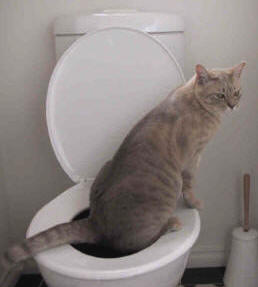Potential Risks of Flushing Cat Poop Down Your Toilet - Advice for Better Handling
Potential Risks of Flushing Cat Poop Down Your Toilet - Advice for Better Handling
Blog Article
Right here in the next paragraph you can locate additional decent data concerning How to Dispose of Cat Poop and Litter Without Plastic Bags.

Intro
As pet cat owners, it's necessary to bear in mind how we get rid of our feline good friends' waste. While it might seem convenient to flush cat poop down the bathroom, this method can have harmful consequences for both the atmosphere and human health and wellness.
Ecological Impact
Purging pet cat poop presents dangerous microorganisms and parasites right into the water system, positioning a considerable danger to aquatic communities. These pollutants can negatively impact aquatic life and concession water high quality.
Health and wellness Risks
In addition to environmental concerns, purging feline waste can also posture health and wellness risks to human beings. Cat feces might contain Toxoplasma gondii, a parasite that can cause toxoplasmosis-- a potentially serious disease, specifically for expecting females and people with damaged immune systems.
Alternatives to Flushing
Fortunately, there are more secure and more accountable methods to dispose of pet cat poop. Think about the complying with choices:
1. Scoop and Dispose in Trash
The most usual method of disposing of cat poop is to scoop it right into a naturally degradable bag and throw it in the trash. Make sure to use a devoted trash scoop and throw away the waste quickly.
2. Usage Biodegradable Litter
Select naturally degradable feline litter made from products such as corn or wheat. These litters are eco-friendly and can be safely disposed of in the garbage.
3. Hide in the Yard
If you have a lawn, consider hiding pet cat waste in a designated area away from vegetable yards and water sources. Make sure to dig deep adequate to stop contamination of groundwater.
4. Mount a Pet Waste Disposal System
Buy a pet dog waste disposal system specifically made for cat waste. These systems make use of enzymes to break down the waste, lowering odor and environmental effect.
Conclusion
Responsible animal ownership prolongs beyond supplying food and sanctuary-- it likewise involves appropriate waste management. By refraining from purging cat poop down the commode and opting for alternative disposal approaches, we can minimize our ecological impact and safeguard human health and wellness.
Why You Should Never Flush Cat Poop Down the Toilet
A rose by any other name might smell as sweet, but not all poop is created equal. Toilets, and our sewage systems, are designed for human excrement, not animal waste. It might seem like it couldn’t hurt to toss cat feces into the loo, but it’s not a good idea to flush cat poop in the toilet.
First and foremost, assuming your cat uses a litter box, any waste is going to have litter on it. And even the smallest amount of litter can wreak havoc on plumbing.
Over time, small amounts build up, filling up your septic system. Most litter sold today is clumping; it is made from a type of clay that hardens when it gets wet. Ever tried to scrape old clumps from the bottom of a litter box? You know just how cement-hard it can get!
Now imagine just a small clump of that stuck in your pipes. A simple de-clogger like Drano isn’t going to cut it. And that means it’s going to cost you big time to fix it.
Parasitic Contamination
Believe it or not, your healthy kitty may be harboring a nasty parasite. Only cats excrete Toxoplasma in their feces. Yet it rarely causes serious health issues in the cats that are infected. Most people will be fine too if infected. Only pregnant women and people with compromised immune systems are at risk. (If you’ve ever heard how women who are expecting are excused from litter cleaning duty, Toxoplasma is why.)
But other animals may have a problem if infected with the parasite. And human water treatment systems aren’t designed to handle it. As a result, the systems don’t remove the parasite before discharging wastewater into local waterways. Fish, shellfish, and other marine life — otters in particular — are susceptible to toxoplasma. If exposed, most will end up with brain damage and many will die.
Depending on the species of fish, they may end up on someone’s fish hook and, ultimately on someone’s dinner plate. If that someone has a chronic illness, they’re at risk.
Skip the Toilet Training
We know there are folks out there who like to toilet train their cats. And we give them props, it takes a lot of work. But thanks to the toxoplasma, it’s not a good idea.

Do you appreciate reading about How to Dispose of Cat Poop and Litter Without Plastic Bags? Put a short review down the page. We would be delighted to hear your responses about this entry. In hopes that you visit us again in the future. Liked our post? Please share it. Let others locate it. Thanks so much for taking the time to read it.
See Availability Report this page